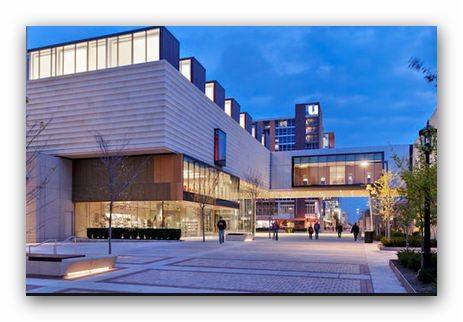Mar 3 2017 - May 14 2017
Madison, WI
Martha Glowacki’s Natural History, Observations and Reflections presents sculpture and installations that concern human observation and description of the natural world. In this exhibition, Glowacki is particularly interested in the history of science and scientific illustration.
The exhibition is divided into four parts. A cabinet of curiosities, titled What Every Woman Ought to Know, has drawers filled with objects and etched images that draw from nineteenth-century books on women’s deportment. A second group of artworks references the history of plant collecting and physiology. This area includes three metal laboratory tables with tableaus of tools and constructed plant forms inspired by eigtheenth century records of experiments to determine whether plants grow towards the light. Another area of the exhibition is an installation inspired by the nineteenth-century French physiologist Étienne Jules Marey, who developed a gun camera and sensitive recording devices to analyze the physical aspects of human and animal movement. Glowacki’s installation imagines a scene from Marey’s laboratory. In the fourth part of the exhibit viewers can look at a group of hanging objects through a camera obscura and experience two different types of mirror illusions.
Glowacki incorporates scientific illustration and writing in several ways, ranging from direct appropriation of images, to using images and ideas from the history of science as a bridge to developing visual metaphors. On one hand, she is drawn to the visual richness of many scientific illustrations, to the qualities of the paper and print techniques used to make them. She is also fascinated by the unexpected ways that many of these illustrations combine beauty with morbidity, or by their odd juxtapositions of text with inscrutable processes.
Glowacki’s intent with this exhibition is to introduce a wider audience to the rich history of scientific illustration, and to open a dialogue about intersections between scientific illustration and visual art. Of equal importance, she wants to create a sense of wonder about the beauty and complexity of the natural world and to remind people about the joys of learning and observation.
Credit: Exhibition overview from museum website
Whether or not you go, Amazing Rare Things: The Art of Natural History in the Age of Discovery is a gorgeously illustrated volume devoted to the natural history drawings and watercolors of Leonardo da Vinci and other outstanding artists of the Age of Discovery.
From the fifteenth century onwards, as European explorers sailed forth on grand voyages of discovery, their encounters with exotic plants and animals fanned intense scientific interest. Scholars began to examine nature with fresh eyes, and pioneering artists transformed the way nature was seen and understood. In this book, renowned naturalist and documentary-maker David Attenborough joins with expert colleagues to explore how artists portrayed the natural world during this era of burgeoning scientific interest.
The book focuses on an exquisite selection of natural history drawings and watercolors by Leonardo da Vinci, Alexander Marshal, Maria Sibylla Merian, and Mark Catesby, and from the collection of Cassiano dal Pozzo—works all held in the Royal Library at Windsor Castle. Attenborough and his coauthors offer lucid commentary on topics ranging from the 30,000-year history of human drawings of the natural world, to Leonardo’s fascination with natural processes, to Catesby’s groundbreaking studies that introduced Europeans to the plants and animals of North America. With 160 full color illustrations, this beautiful book will appeal to readers with interests that extend from art and science to history and nature.
Amazing Rare Things: The Art of Natural History in the Age of Discovery
Exhibition Venues & Dates
Mar 3 2017 - May 14 2017
Madison, WI

